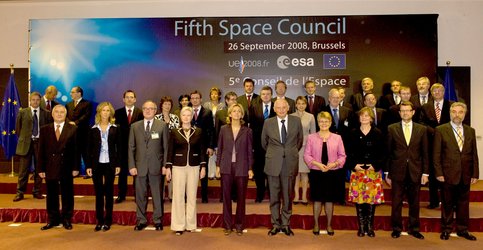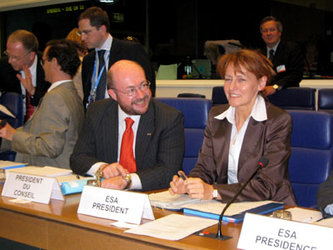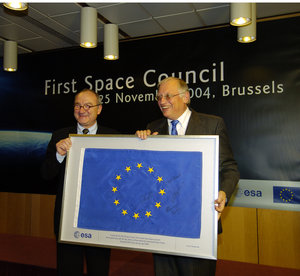European milestones
The relations between ESA and the European Commission have been paved by milestones preparing the basis for future cooperation between the two organisations.
16 November 2000 - European Strategy for Space
ESA and the European Union (at the time the European Communities) Councils met together for the first time to adopt parallel resolutions endorsing the jointly elaborated European Strategy for Space. They also endorsed the setting up of a cooperative structure to bring together the ESA Executive and the European Commission: a high-level joint taskforce to make proposals for the continuing development and implementation of the European Strategy for Space.
January 2003 - Green Paper on European Space Policy
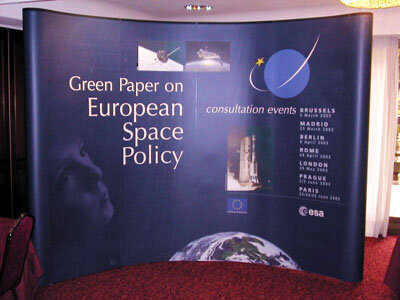
The European Commission introduced the 'Green Paper on European Space Policy', prepared in cooperation with ESA. The Green Paper looked into Europe’s assets and weaknesses in the space sector in order to launch a debate on Europe’s space policy with all players including national and international organisations, the European space industry and its users, and Europe’s scientific community and citizens.
November 2003 - ESA/EC Framework Agreement
The ESA Council adopted the Framework Agreement (FA) endorsed by the EU Council in October 2003. The FA entered into force in May 2004.
The Framework Agreement recognises that both parties have specific complementary and mutually reinforcing strengths, and commits them to work together to avoid duplication of effort. The framework has two main aims:
- to establish a common basis and appropriate practical arrangements for efficient and mutually beneficial cooperation between ESA and the EU;
- to progressively develop a European space policy to link the demand for services and applications in support of EU policies with the supply, through ESA, of the space systems and infrastructure needed to meet that demand. The European Space Policy was adopted in May 2007.
November 2003 - White Paper on Space
The EC adopted this action plan for implementing an enlarged 'European space policy'. Drafted together with ESA, the White Paper included proposals for joint ESA-EU space programmes and took the Framework Agreement as its basis for implementation.
November 2004 - First 'Space Council'
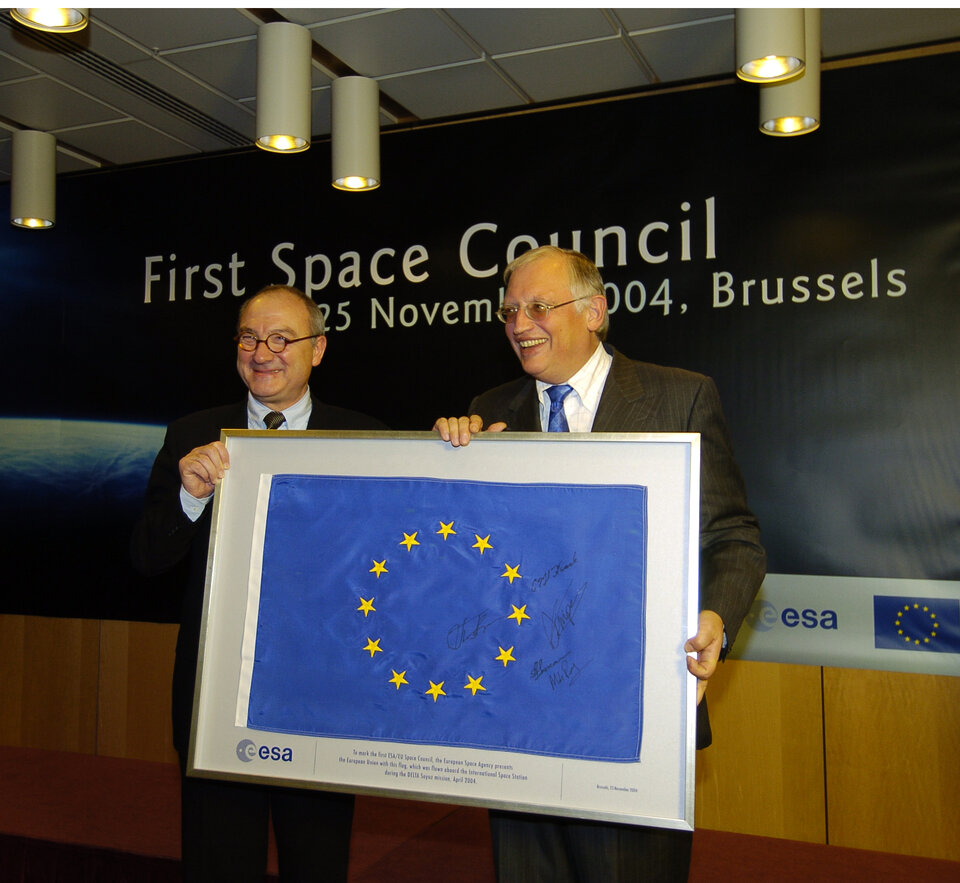
Concomitant meetings of the EU Council and the ESA Ministerial Council, known as the 'Space Council', were foreseen under the Framework Agreement. The Space Council allows all ESA and EU Member States, including cooperating states, to gather together to discuss the development of a coherent overall European space programme, leading to the adoption of joint orientations regarding space.
The Space Council met for the first time in 2004 and the 7th meeting took place in November 2010. In June 2005, the orientations approved by the second Space Council allowed the definition of the sharing of roles and responsibilities at the highest level, as well as priorities and guidelines.
The third Space Council in November 2005 established GMES as the second flagship programme in addition to Galileo. The fourth Space Council endorsed the European Space Policy in May 2007. The fifth and sixth Space Councils proposed plans for furthering the European Space Policy, GMES and innovation, while the seventh Space Council in November 2010, the first one to take place following the entry into force of the Lisbon Treaty, reaffirmed the support for a leadership role for Europe in space.
May 2007 - European Space Policy
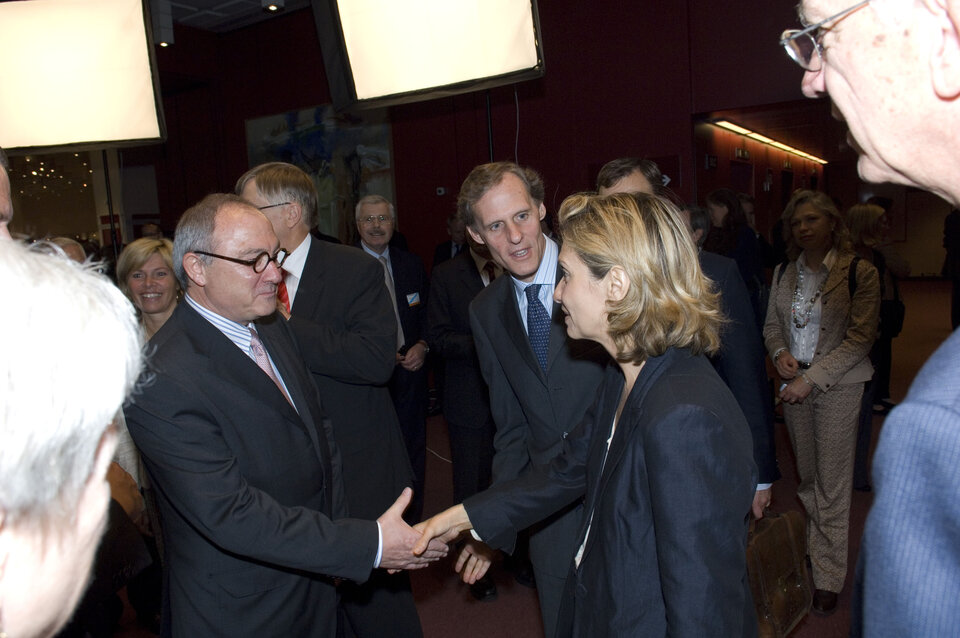
Twenty-nine European countries at the Fourth Space Council expressed their support to the European Space Policy, unifying the approaches of ESA and the EU with those of their respective member states. This was the first time a common political framework for space activities had been created in Europe. Jointly prepared by the European Commission and ESA, the European Space Policy sets out a basic vision and strategy for the space sector, and addresses issues such as security and defence, access to space and exploration.
December 2009 – Entry into force of the Lisbon Treaty
The Treaty on the Functioning of the European Union (TFEU), or Lisbon Treaty, reinforces the case for space in Europe by putting it on the political agenda at the highest level, and explicitly mentions ESA. Article 189 of the Lisbon Treaty specifies the EU’s space competence which operates together with that of the EU Member States. It also provides that the EU should establish appropriate relations with ESA.
The EU Council subsequently introduced space into the terms of reference of the EU Competitiveness Council. This is supported by the Space Working Party, to which ESA may be invited as observer.
Within this framework, the EC published on 4 April 2011 a communication which sets the basis for an EU space strategy. The EU is currently preparing its next Multi-annual Financial Framework for the period beyond 2014 which will define the contour of the EU involvement in space.






